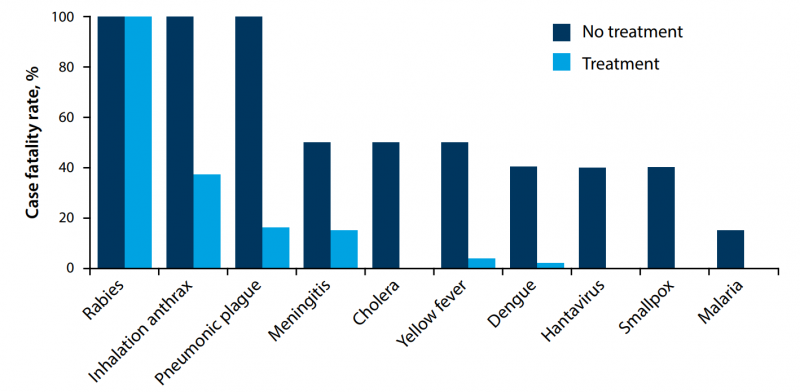‘Share the message. Save a life.’
This is the slogan for this year’s World Rabies Day, which aims to raise awareness about a virus that remains a significant problem throughout much of the world, particularly in children.
According to the World Health Organization (WHO), around 59 000 people die from rabies every year. Sadly, more than half of these fatalities are in children less than 15 years of age because they are more likely to pet and play with animals, which increases the likelihood of being bitten by an infected animal.
Although most infections occur in Africa and Asia, rabies is present on every continent, except Antarctica. Transmitted through the saliva of infected animals, the virus spreads through the nerve cells to the brain, where it begins to multiply. The incubation period is variable, with the first symptoms occurring anywhere between a few days post-infection to more than a year since the bite occurred. Starting with paraesthesia around the wound, often accompanied by headache, fever and nausea; as the virus spreads through the central nervous system, fatal inflammation of the brain occurs.
About 80% of patients develop ‘furious rabies’ and exhibit the symptoms most people imagine when they think of rabies – fear of water, hyperactivity and an inability to swallow, leading to ‘frothing’ of the mouth from the build-up of saliva. Death occurs within a few days due to cardiorespiratory arrest.
The remaining 20% of patients will develop ‘paralytic rabies’, where symptoms generally develop over a longer period. Starting at the wound site, muscles become paralysed, and this irrevocably spreads throughout the body until the patient falls into a coma and eventually dies.
Rabies has the highest case fatality rate of any known infectious disease, with 99.9% of patients who do not receive prompt treatment dying.
Case fatality rates of known infectious diseases

Fortunately, vaccination against rabies is effective both as a pre-exposure course and (if received promptly) post-exposure treatment.
Pre-exposure immunisation is recommended for people who work closely with infected animals, such as wildlife rangers, animal control agents or those who work at quarantine centres. Health authorities also recommend vaccination for travellers visiting an area where rabies is common and where prompt access to treatment is not available. The treatment course consists of three vaccinations across a 4-week period, so it must be started at least a month before travelling.
“Rabies is a horrific way to die. Once symptoms show, it is 99.9% fatal. However, it is 100% preventable.”
Professor Deborah Briggs
For those bitten while unvaccinated, post-exposure treatment using rabies vaccine, with or without rabies immunoglobulins, is highly effective in preventing disease if given correctly and promptly after exposure.
World Rabies Day is celebrated on the 28 September because of its connection to Louis Pasteur, who died that day in 1895. His pioneering work on the principles of vaccination led him, together with Émile Roux, to develop the first vaccination for rabies.
Although Pasteur would be amazed at the progress rabies vaccination has made since he first treated a 9-year-old boy in 1885 (despite risking prosecution as he did not hold a medical license), he would be disappointed that the disease is still causing the deaths of so many people each year.
World Rabies Day is one strand of the WHO’s educational and scientific efforts to reduce deaths from rabies, and its educational messages concerning what remains a significant killer deserve our full support.


